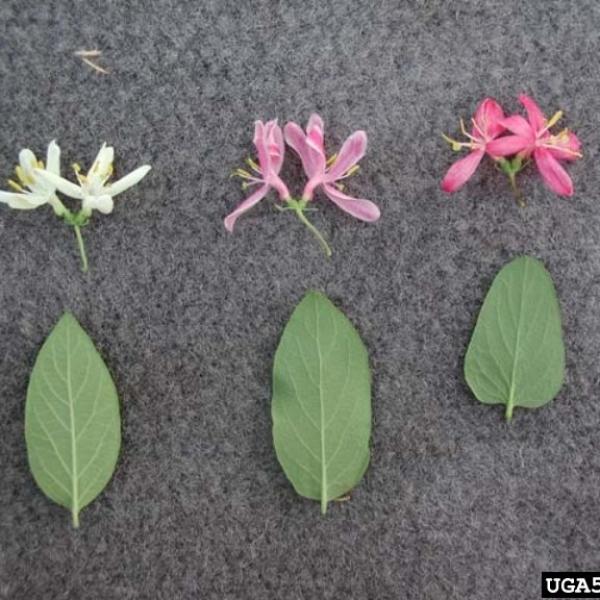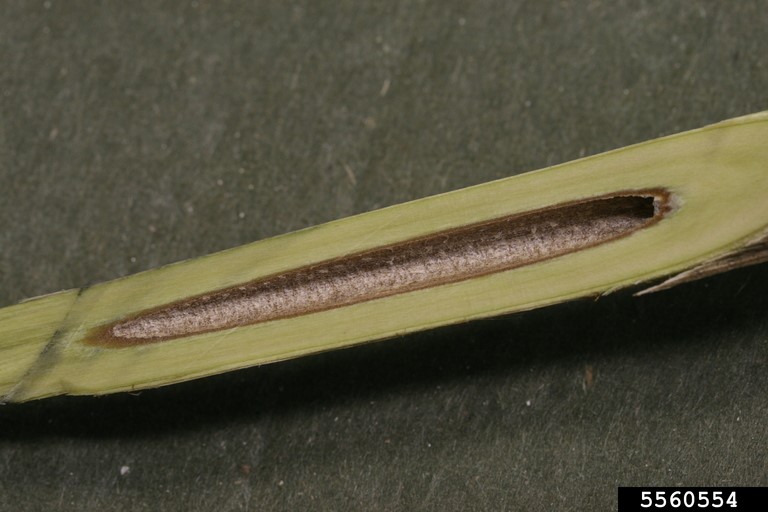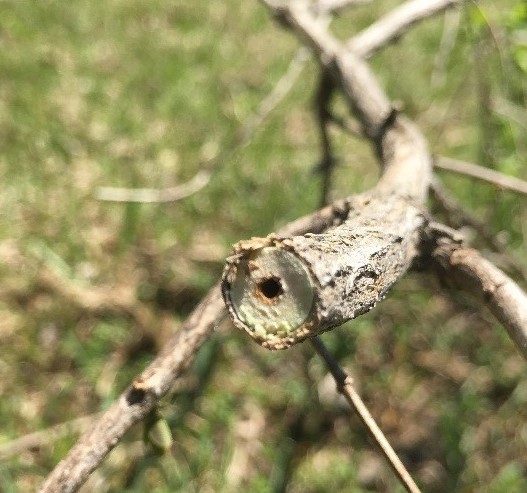
Author: Elizabeth Spinney, Invasive Plant Coordinator, Vermont Department of Forests, Parks & Recreation
November 2021
Over 75% of Vermont is beautiful forests – with more than 80% of that being privately owned – but much of that forest land faces a significant forest health threat in the form of invasive plants. It is up to each of us to do our part, whether on our own land or in our communities, to help protect Vermont forests for future generations. Even small actions, like choosing locally evolved plants for your garden or pulling up garlic mustard on town trails add up to make a big difference. At the Vermont Department of Forests, Parks & Recreation, our burgeoning Invasive Plant Program is working to help steward Vermont’s state-owned public lands and, through grant funded programs, help communities do the same with support by trained professionals.
Since 2014, our small program (1 full time person and 1-2 seasonal staff) have worked with almost 4,000 volunteers who have assisted with direct management of invasive plants in Vermont, and we receive over 400 inquiries annually about identification, control options, or outreach. We rely on Vermonters to steward private and community forests, and focus most of our efforts on raising awareness, equipping Vermonters with useful tools for invasive plant identification and management, and empowering people to act.
In order to support the work we all do, we have developed a homepage for FPR’s Invasive Plant Program, as well as these new/updated resources for invasive plant management – and they all can be found on VTinvasives.org:
- How to Get Started with Management
- How to Run a Volunteer Workday, Case Studies, and Working with Volunteers of All Ages
- Pocket Guide for 12 Common Invasive Plants in Vermont
- Podcast about Invasive Plant Phenology
There are many useful ways for Vermonters to get involved, including tracking the location of plants using community science tools like iNaturalist, participating in the statewide invasive plant phenology monitoring project, organizing or supporting a regional Cooperative Invasive Plant Management Area (CISMA), or learning and teaching about invasive plants. Check out this annual summary to learn more about the great work being done across Vermont to protect our natural resources from the impacts of invasive plants.
A great first step is to take a walk in your own woods or nearby park and notice what plants are present in the understory. A common sight are shrub honeysuckles (Lonicera spp.) – and this time of year they stand out as their rich dark leaves have turned almost vibrant lime green. The genus Lonicera contains shrubs and vines, but the more common invasive honeysuckles in Vermont are woody shrubs. There are four invasive shrub honeysuckles present in Vermont forests: amur, Morrow’s, tatarian, and showy (a hybrid of Morrow’s and tatarian). In many ways, they look similar. The leaves are arranged oppositely and are generally oval shaped, and the fruits and flowers look alike, occurring twinned from the leaf axils. These plants are all fairly tall, reaching from 8’ to over 20’ in height. See photo, top right: Comparison of hybrid and parent species of honeysuckle. Left to Right: Morrow’s, showy, and tatarian honeysuckle leaves and flowers. Photo credit: Leslie J. Mehrhoff, University of Connecticut, Bugwood.org.
There are a few ways to distinguish the invasive honeysuckles from each other:
- Leaf shape
- Amur honeysuckle ranges from elliptic to ovate to lanceolate with a long, tapered tip
- Morrow’s honeysuckle ranges from oval to elliptic to ovate with blunt pointed tip
- Tatarian honeysuckle ranges from ovate to oblong with blunt pointed tip
- Showy honeysuckle is typically ovate with blunt pointed tip
- Leaf hairs on lower surface
- Amur honeysuckle is pubescent (hairy)
- Morrow’s honeysuckle is densely pubescent
- Tatarian honeysuckle is glabrous (lacks hairs)
- Showy honeysuckle is slightly pubescent
- Flower color and fruit
- Amur honeysuckle flowers are white fading to yellow turning to dark red fruit in late summer
- Morrow’s honeysuckle flowers are white fading to yellow turning to red fruit in summer
- Tatarian honeysuckle flowers range from white to pink, and don’t fade to yellow, the fruit are red and occasionally orange or yellow
- Showy honeysuckle flowers range from white to pink fading to yellow turning to somewhat red fruit in the summer
- Plant height
- Amur honeysuckle is up to 15’+ tall
- Morrow’s honeysuckle is up to 8’+ tall
- Tatarian honeysuckle is up to 10’ tall
- Showy honeysuckle is up to 20’ tall

All four invasive honeysuckles have hollow/brown piths, while the locally evolved honeysuckles have solid/white piths. Photo credit: Chris Evans, University of Illinois, Bugwood.org.

All four invasive honeysuckles have hollow/brown piths, while the locally evolved honeysuckles have solid/white piths. Photo credit: FPR staff.
All four species grow densely in the understory of forests or along fields and forest edges, which shades out and excludes locally evolved plants, and changes habitat and food resources for wildlife. Though the physical structure of the shrubs can provide habitat and the fruit is plentiful, neither are ideal for wildlife – The low branches of honeysuckles make nesting birds more susceptible to predation, and the fruit lacks nutrition needed by locally evolved birds and mammals. Some research is starting to suggest that dense infestations can even be a haven for pests such as ticks. These negative impacts are why amur, Morrow’s, tatarian, and showy honeysuckle are all listed as Class B Noxious Weeds in Vermont.
We can all help others by learning about which species to plant (or avoid), can write and
enact robust invasive plant management plans, and can get involved by hosting workdays and educational events, and so much more. By sharing this burden with our neighbors, family, and community, we can empower ourselves and others to act and effect true and lasting solutions. These small steps add up to making a difference in Vermont.
If you’ve found an early detection invasive plant, you can report it here.
If you have questions about identification, control, or management, check out VTinvasives.org or send your inquiries to: ANR.FPRInvasivePlants@vermont.gov